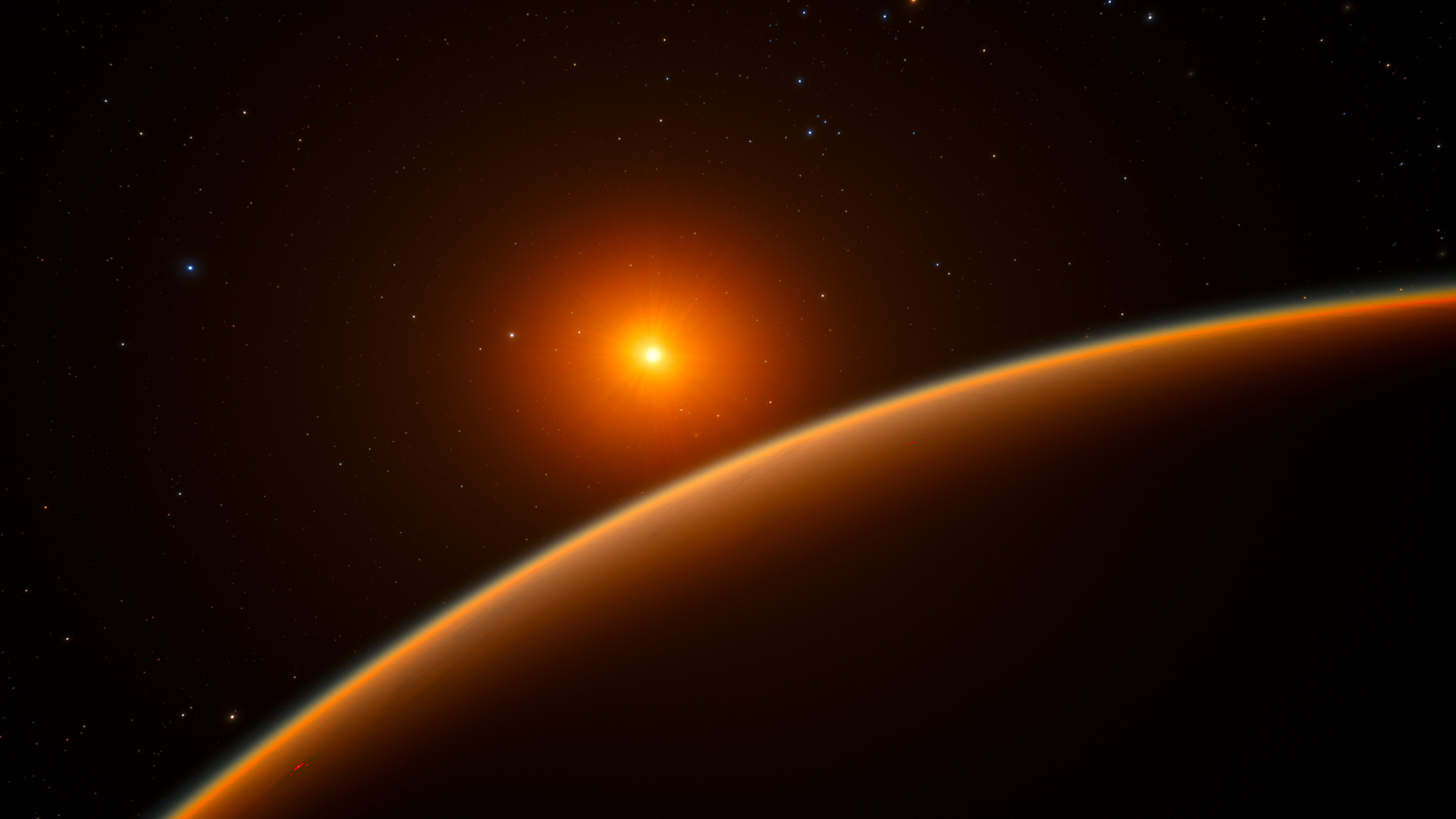
An exoplanet orbiting a small star some 50 light-years away from Earth may be a life-friendly water world, a new study has revealed — and the James Webb Space Telescope could determine if that is indeed the case.
The planet in question, called LHS 1140b, orbits in the habitable zone of a small, dim star called LHS 1140 that lies in the constellation Cetus. The exoplanet was discovered in 2017 and has been observed by multiple telescopes since.
These observations first convinced researchers that LHS 1140b is a rocky planet about 1.7 times wider than Earth. But a new analysis of all available observations has shown that LHS 1140b is not dense enough to be purely rocky and must either contain much more water than Earth or possess an extensive atmosphere full of light elements such as hydrogen and helium.
Researchers can't yet tell which of the two options is correct, but the James Webb Space Telescope (JWST) might be able to find out in the coming years. If LHS 1140b is a water world, then the planet is set to become the number one target in the search for life outside our solar system.
Related: The search for alien life
"Since the planet is in the habitable zone, it's really interesting, because if you had water on the surface of a planet inside the habitable zone, you would expect that some of the water is in the liquid state," Charles Cadieux, an astronomy researcher at the University of Montreal and lead author of the new study, told Space.com. "So that's a really interesting scenario in terms of habitability."
Since the first-ever discovery of an exoplanet in 1992, astronomers have confirmed more than 5,500 worlds orbiting stars in the Milky Way galaxy. Of those known exoplanets, however, only a handful are potentially habitable, said Cadieux.
For years, the most promising target to search for extrasolar life has been the intriguing system around a small, red star called TRAPPIST-1. A little closer to Earth than LHS 1140, TRAPPIST-1 hosts an impressive collection of seven known Earth-size exoplanets, three of which circle in the star in its habitable zone. But recent observations by JWST have been turning out disappointing results, suggesting that those planets might be completely barren with no atmosphere and no surface water. That, Cadieux said, is not entirely surprising.
"We know that the TRAPPIST-1 star is very active," Cadieux said. "It produces many flares. And the current observations with Webb suggest that these planets may be just balls of rock with no atmosphere and probably no life at all because the star is too active, and all the atmospheres have been stripped off."
The lesser-known LHS 1140 star is much less active than TRAPPIST-1, Cadieux added. At about 20% the size and mass of our sun, LHS 1140 emits barely enough energy to produce habitable conditions in a region closer to its surface than Mercury is from the sun. Planet LHS 1140b is, in fact, thought to be cooler than Earth even though it orbits more than four times closer to its star than the scorching Mercury orbits the sun.
"I think that LHS 1140 is the next most interesting exoplanet system after TRAPPIST-1 in terms of habitability," Cadieux said. "And the results of our study help us to identify what to look for in the future with other programs."
Cadieux said the researchers have applied to study the LHS 1140 system with JWST to investigate whether the exoplanet has an atmosphere full of hydrogen and helium or whether it appears to have an abundance of water. So far, however, no observations have been planned.
"If it could be confirmed in the future that it is a water world, we can do some modelling of the planet's climate to see whether there is liquid water on the surface," said Cadieux. "That would be the first indirect detection of liquid water on an exoplanet, and that would be a very nice discovery."
The study was published in The Astrophysical Journal Letters on Jan. 3.







